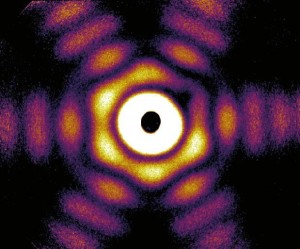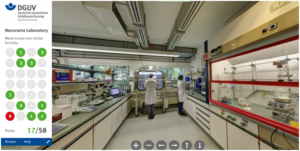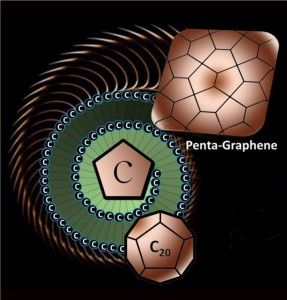It’s nice to learn of another Canadian ‘nanotechnology’ company. According to a Feb. 6, 2015 news item on Nanotechnology Now, Toronto-based Green Earth Nano Science has recently received some very good business news,
Green Earth Nano Science has signed an Exclusive Distribution Agreement with CleanShield Denmark to bring GENS NANO and SOLARSTUCCO self-cleaning coatings, and AGRIHIT biodegradable cleaners, organic plant based disinfectants, and sanitizers into Denmark, Sweden, Norway and German markets.
A Feb. 1, 2015 Green Earth Nano Science news release, which originated the news item, describes the deal in more detail,
Green Earth Nano Science, Inc., (GENS) from Toronto, Canada is one of the first of the new class of global companies specializing in investment, commercialization, manufacturing, and distribution of new sustainable green environmental technologies. GENS have recently expanded its marketplace to Denmark, Sweden, Norway and Germany through Danish company CleanShield by signing Exclusive License Distribution Agreement for distribution and application of its Gens Nano & SolarStucco branded self-cleaning, anti-bacterial coatings, and AgriHit branded organic disinfectants & sanitizers, natural bio degradable cleaners, natural foliar fertilizers & plant growth & health enhancers.
CleanShield, a Denmark Company, is a growing corporation with an existing applicator and sales networks with customers in key Denmark industrial and hospitality segments. CleanShield has strong capabilities to develop sales distribution and application networks through their connection and relationships with many local businesses, government, health care and hospitality facilities plus building maintenance companies. Green technology products portfolio offered by Green Earth Nano Science, Inc. focuses on constant improvements through commercialization of path breaking technologies that benefit the environment as well as people. Many industries benefit from GENS natural products and environmental solutions, including farming, food, health care, hospitality, commercial and residential industries.
Miroslaw Chrzaniecki, VP from Green Earth Nano Science, Inc. stated: “We are energized with opportunity to serve and expend in Denmark, Sweden, Norway and German territories. Looking just at Denmark, it is one of the World’s richest countries, home to various types of industries including big agricultural production companies making it an ideal frontier for expansion. To add to this fact, Denmark’s principal exports: machinery, instruments, food products, industrial machinery, chemical products, furniture, pharmaceuticals, and canned ham and pork can all benefit GENS’s Green 3D Shield bio security system that works wonders by utilizing herbal natural cleaning technologies. Local farmers as mentioned by Mr. Chrzaniecki can also take advantage of the revolutionary AgriHit Plant Growth & Health Enhancer, made from plant extracts when applied diluted with water on the plant leafs help plants to fight off diseases, repel small insects, fungi attacks. [emphasis mine] Other products we introduce in Denmark, Sweden, Norway and Germany are our natural cleaners, organic sanitizers; natural self-cleaning and self-sanitizing antibacterial coatings will benefit many businesses and even home clients as well. For example e-coil, salmonella and other potential devastating outbreaks within food manufactures can be prevented or reduced by application of GENS NANO self sanitizing coating. Hotels and office building and homes can be made as allergy free by treating A/C systems and regular use of food safe, long lasting AgriHit organic disinfectants and by using our plant based antibacterial cleaners in daily cleaning routines. I can talk for hours about many different benefits that together with our exclusive license partners we will introduce in Europe.” opines Miroslaw Chrzaniecki, VP of Green Earth Nano Science, Inc.
On the other hand, Mr. Thomas Gregersen Bowmann, Director of CleanShield shares the same enthusiasm and excitement saying “Now by signing Exclusive Territory Licensing agreement with Canadian company Green Earth Nano Science Inc. we are on the forefront of green revolution in Denmark. With a professional team ready to happily serve and offer these green infection control solutions using GENS’s reliable green-products such as SolarStucco, AgriHit and 3D Shield bio security systems can help sustain our loyal clients’ needs to achieve great savings and reducing outbreak problems while protecting the environment. Crews are experienced and well trained and we are very happy to be able to offer green infection control solutions and implement Green 3D Shield bio security system in their facilities. With the introduction of environment friendly, natural products, we will help our clients to achieve great savings for the whole different industries and also reduce problems associated with outbreaks at the same time. We will be implementing an aggressive marketing strategy to explore all business opportunities in Denmark.”
The AgriHit product, the part about “repel small insects, fungi attacks,” reminds me of Vive Crop Protection (another Toronto-based ‘nano’ company) and its product line. I last mentioned that company in a Nov. 21, 2014 post about the expansion of its manufacturing capabilities.
Getting back to the matter at hand, congratulations to Green Earth Nano Science! You can find out more about CleanShield here, provided you have Danish language skills. For anyone particularly interested in AgriHit (the Green Earth Nano Science [GENS] product), it has its own website here. One comment, I found the GENS website organization a little confusing. I advise checking both the Solutions tab and the Products tab if you’re interested in learning more about their products, as well as, visiting the AgriHit website.


